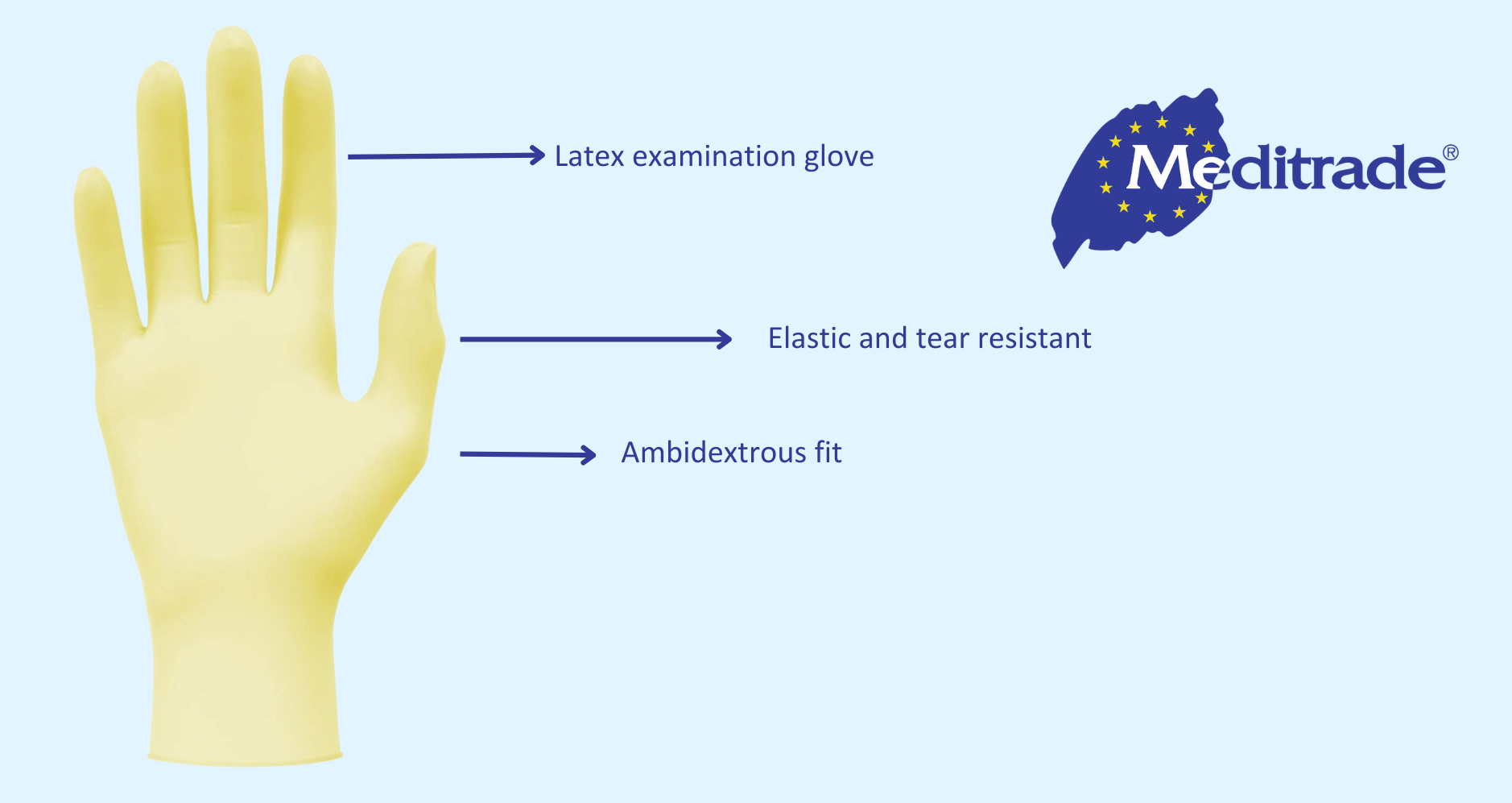In the dynamic landscape of workplace safety, the role of disposable gloves is key. While latex allergies are widely recognized, it’s important to acknowledge that allergy risks extend beyond natural rubber latex. To ease the task for business considering procurement and safety measures, we will dive into potential allergens in non-latex gloves.
Latex is a crucial component known for enhancing flexibility, comfort, and tactile sensitivity in gloves. Explore the origins and qualities of latex gloves in our glossary. Discover more about latex. It’s essential to note that latex, derived from the natural rubber sap of the Hevea brasiliensis tree, which has undergone significant improvements over the years. Unlike the gloves of the 80s and 90s that contributed to a rise in allergy rates, today’s latex gloves are markedly enhanced. Upgraded washing cycles and higher standards on raw materials have led to lower protein levels, significantly reducing the risk of latex allergies.

Glove materials not made from natural rubber latex can trigger allergic reactions. “The causes in non-latex gloves could include chemical substances such as specific accelerators or other ingredients used during the manufacturing process” according to the – National Library of Medicine. Individuals allergic to these chemicals may experience symptoms such as skin redness, itching, swelling, or skin rashes. (Hansen, Brans and Sonsmann, 2021). It is worth to note that the occlusion of fresh air to the skin for prolonged time, together with a wet or sweaty outer layer of the skin can cause skin irritation without any contribution by the material itself. A regular change of gloves and the drying of the hand skin in between can help to reduce the risk for such reactions.
Understanding the composition of non-latex gloves is important for identifying potential allergens. Considering latex-free alternatives like nitrile gloves and vinyl gloves. With Nitril being a synthetic rubber, which is a common material for gloves, providing excellent chemical resistance. A perfect alternative for latex-allergic individuals. Vinyl gloves, on the other hand, are an option, but it is to note that the materials used such as polyvinyl chloride (PVC) may cause sensitivity in some individuals.
Instances of allergic reactions to vinyl gloves are extremely uncommon. Typically, the issue is contact urticaria, a straightforward skin irritation arising from perspiration and inadequate ventilation within the glove. The use of glove liners and an ambidextrous fit, with rolled edge such as our Vinyl 2000 and Vinyl BlueGen can potentially prevent and, in most cases, eliminate this irritation.
Latex gloves can contain accelerators and stabilizing substances, beside natural rubber proteins, that all individually can contribute to potential allergens. However, as stated earlier, advancements in production have made these cases significantly rarer.
Nitrile gloves, although they do not contain any natural rubber, still incorporate accelerators and stabilizing substances, and these are key elements to consider the potential for any reactions. Similar to the latex gloves, the same improvements in the technology have made these adverse reactions a rare phenomenon.
While allergens are low, the plasticizers used to make the glove soft can still cause a reaction and are rarely healthy, especially when they are used against the instructions for use for food that contains any kind of fat.
If there’s a suspicion of an allergy to certain glove materials, switching to alternative glove types like nitrile gloves and vinyl gloves could be the solution. These gloves provide latex-free options. However, it’s crucial to note that a visit to the dermatologist and proper testing with immunological experts is advisable before making a switch. This approach helps individuals identify the specific substance group causing potential issues, ensuring a more informed decision on the most suitable glove type.
Mitigating allergy risks involves selecting the right glove on an individual level. Nitrile gloves and vinyl gloves are commonly chosen as latex alternatives, but it’s advised to opt for those with minimal chemical additives. Meditrade committed itself to highlight potential allergens on both, the labelling, and the product data sheets. This information is available to every user and therefore, enhances the safety and well-being of our customers.
Emphasizing transparency in glove manufacturing is crucial. Partnering with suppliers committed to openness, such as Meditrade, ensures gloves are chosen thoughtfully, considering the unique sensitivities of the workforce.
In the disposable glove landscape, allergy risks extend beyond natural rubber latex. This guide is tailored for businesses prioritizing safety in procurement. Prioritize your team’s well-being by understanding allergens in non-latex gloves, exploring alternatives, and collaborating with us for transparent choices. Contact us for more insights on enhancing workplace safety with our glove solutions.